
Seagulls follow in the wake of the Staten Island Ferry.
Hello friends, its been a while. I’ve been on a bit of a hiatus from poking around abandoned buildings, but I’m back now with something a little different. This is the first installment of a series on Staten Island—an area of the city that tends to go unnoticed, but is very much worth exploring.
For the unfamiliar, Staten Island stands with Manhattan, Brooklyn, the Bronx, and Queens as one of the five boroughs that make up the city of New York. It is the third largest and least populated of the five. Its identity has always been somewhat distinct from the city at large, due in part to its geographical isolation. Prior to the construction of the Verrazano Bridge in 1964, no crossing existed between Staten Island and any other borough. It remains something of an outlier today, with a suburban nature and right-leaning political tilt. A record of neglect from city government has earned it the oft-repeated title “the forgotten borough,” and the name has stuck.
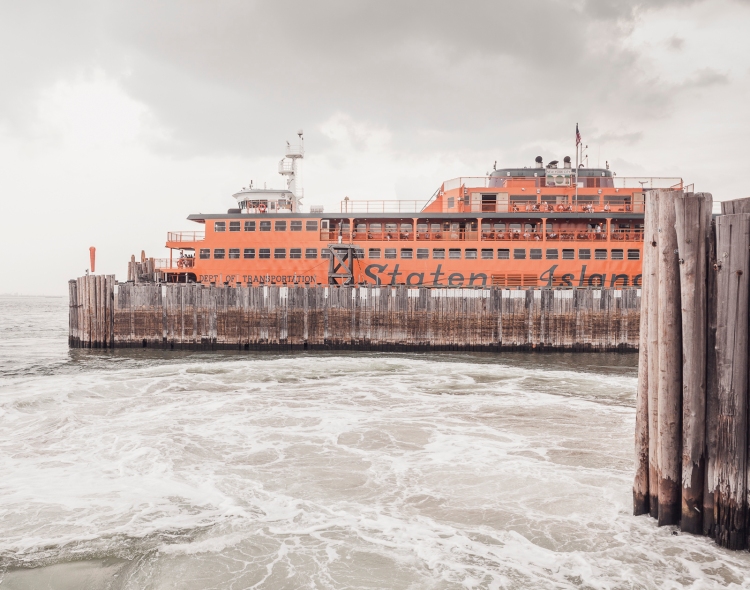
The Staten Island Ferry departs from Lower Manhattan.
From a Manhattan-centric point of view, a trip to Staten Island begins with a ride on the Staten Island Ferry. Over 21 million passengers embark on the 25-minute journey from Lower Manhattan to St. George each year. With dramatic views of the Statue of Liberty and the surrounding harbor, it’s a well-known attraction for New York City tourists. The ride is offered free of charge by the city’s Department of Transportation, but that hasn’t always been the case.

An engraving of the 1871 “Westfield” disaster.
Back in the 18th century, sailboats manned by private individuals competed for fares between Manhattan and Staten Island. In 1817, the first mechanically powered ferry service went into operation, under the direction of Captain John de Forest of the Richmond Turnpike Company. His brother-in-law Cornelius Vanderbilt took over in 1838. Existing ferry service proved inadequate as Staten Island developed, and accidents were common.
In 1871, a boiler explosion on one of the ferries claimed the lives of more than 85 passengers. Jacob Vanderbilt, the president of the Staten Island Railway at the time, was charged with murder, but never convicted. In 1901, a ferry operated by the Staten Island Rapid Transit Company collided with a Jersey Central ferry and sank into the harbor soon after departing the port at Whitehall. Though the disaster was far less deadly than the 1871 episode, city authorities used it as justification to seize control of the service by 1905.
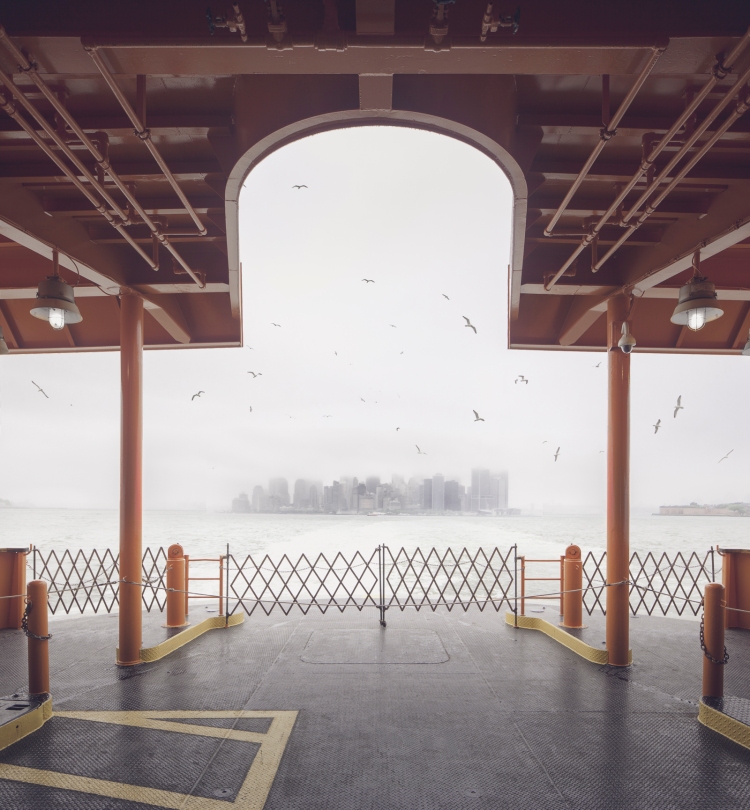
The iconic orange color of the ferries was adopted in 1926, to increase their visibility in heavy fog and snow.

Leaving Manhattan.
A nickel fare was the rule through most of the 20th century, but was increased in 1975 to a quarter, and in 1990 to 50 cents, causing an uproar among borough residents. Coupled with mounting grievances over the Fresh Kills Landfill on the island’s west shore, the fare hike gave rise to a secession movement, which culminated in the passage of a non-binding referendum to make Staten Island an independent city in 1993.
Efforts to secede were subdued by the election of Mayor Rudy Guiliani, who rode to power due in part to overwhelming support from Staten Island voters, many of whom had been won over by his promises to close the landfill and do away with the fare. He followed through on both, abolishing the fare in 1997 and closing the landfill in 2001.
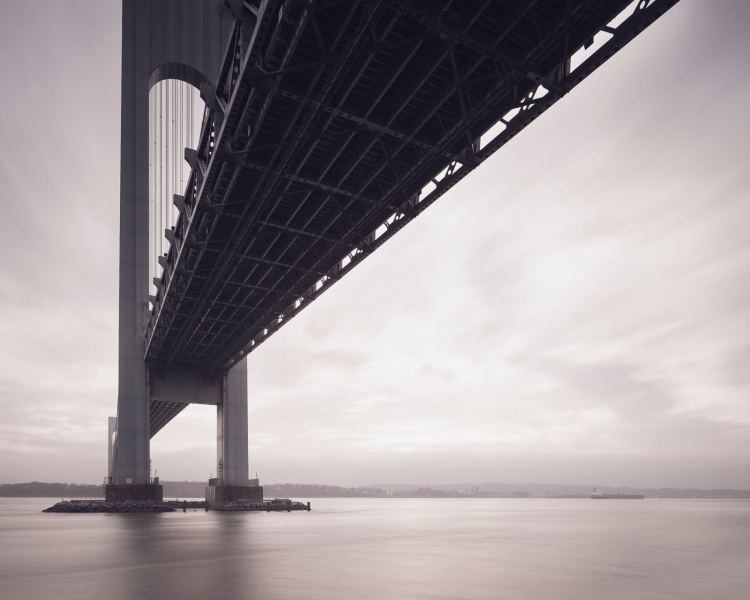
The Verrazano Bridge was the longest suspension bridge in the world at the time it was built.
While the ferry has played a significant role in the history of Staten Island, the construction of the Verrazano-Narrows Bridge has arguably had the greatest impact on its development. The story of Staten Island can generally be understood in terms of two epochs—before and after November 21, 1964, the day the bridge first opened to traffic.
Long-time residents speak longingly of Staten Island before the bridge—when country roads meandered through sweeping forests, quiet beach communities, and open expanses of farmland crawling with nanny goats. In the 19th century, full-time islanders lived side by side with some of the city’s wealthiest residents. As the industrialized city minted new millionaires, many of them looked to the rolling green hills of Staten Island as a scenic escape.
The nature of the borough was permanently altered as the Verrazano-Narrows Bridge prompted a mass migration of newcomers from overpopulated Brooklyn. The influx covered farms and forests with mile upon mile of tract housing, plaguing the island with traffic problems that persist to this day.
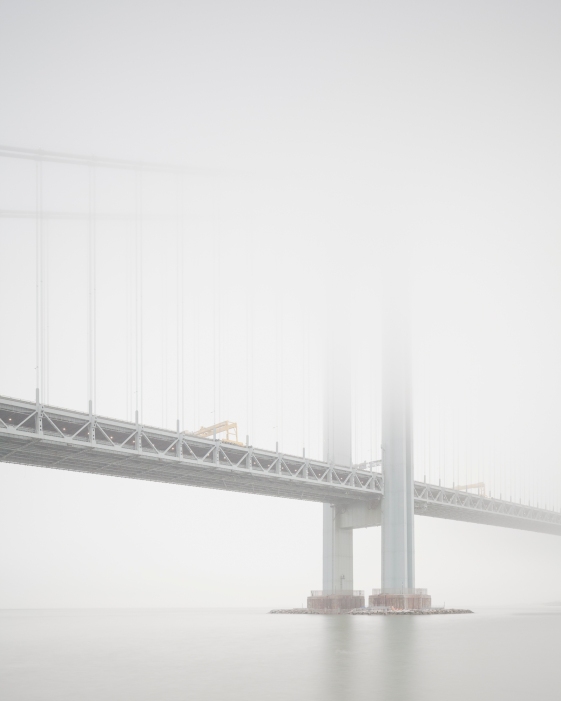
The official name of the Verrazano-Narrows Bridge includes a misspelling of its namesake, Florentine explorer Giovanni da Verrazzano.
As much as the borough has transformed over the years, it has retained its essential otherness. Crossing the harbor by ferry or bridge signals a psychological detachment from the urban environment of New York as we know it. In the hum of traffic, or the roar of surf, the city melts away and you enter a new frontier. Beyond and in-between the strip malls and cookie-cutter houses, scattered remnants of an older, more pastoral Staten Island await. There, Times Square feels a million miles away.
Over a series of upcoming posts, I’ll be examining the many artifacts and oddities that litter the far-flung edges of the borough, and sharing the history behind them. In the meantime, you can visit my website to see more photos from the project, “Arthur Kill Road.”

View of Staten Island obscured by fog, from Bay Ridge, Brooklyn.
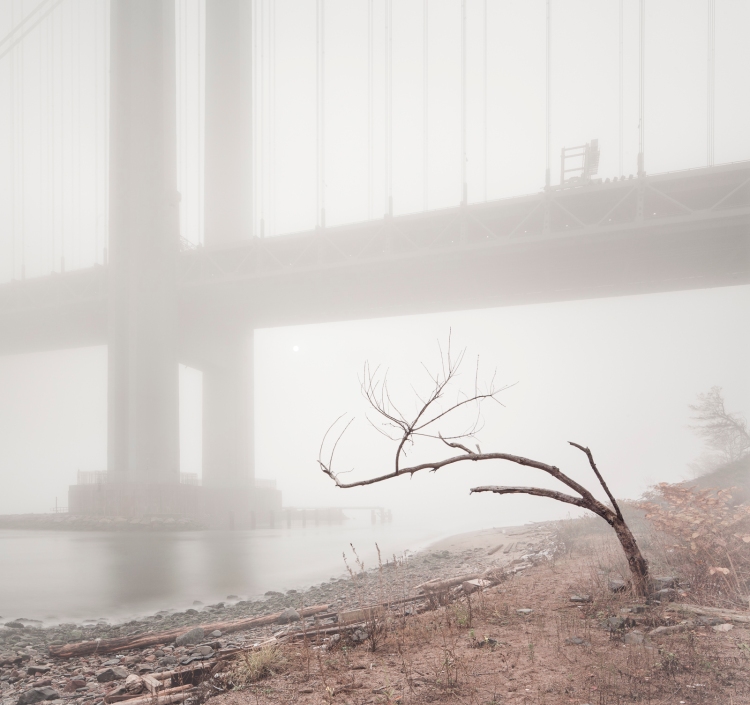
An early morning at Fort Wadsworth, on the opposite side of the span.


Hey Will, welcome back!!! You have been missed.. Happy New Year!! Since I was born and raised on Staten Island some time ago, I am extremely interested in your research and look forward to your upcoming posts. Some possible ideas may be the old SIRT trains with the old wicker seats and the old ferry that ran from Tottenville to Perth Amboy. Glad you are back from hiatus.
LikeLiked by 1 person
Posted by Frank Brennan | 1-3-17., 11:24 amWell done Will. Next book?
LikeLike
Posted by ellis3000 | 1-3-17., 11:34 amHello There I find your research outstanding. I am a journalist and would like to have a conversation with you. Regards, Christian
Sent from my iPhone
>
LikeLike
Posted by Christian Johnson | 1-3-17., 12:12 pmThanks Christian, feel free to get in touch via email. I’m will@abandonednyc.com
LikeLike
Posted by Will Ellis | 1-4-17., 12:10 pmWelcome back Will ! Kudos for focusing on Staten Island. You might want to consider the Sailors’ Snug Harbor Cemetery and the Forgotten 6500 Mariners whom are interred there. I am a descendant of a Mariner who resided at the SSH retirement home, in the late 1800s, and is interred in the SSH cemetery. If your interested, contact me for more info.
LikeLike
Posted by BJ | 1-3-17., 1:02 pmVisited the cemetery, which is close to Allison Park and Goodhue Woods. Link to share about cemetery.
http://www.findagrave.com/cgi-bin/fg.cgi?page=cr&CRid=2244490
Great resource: Friends of Abandoned Cemeteries executive director Lynn Rogers.
LikeLike
Posted by Claudia Toback | 1-4-17., 8:56 amThanks for the tip! I remember reading about the cemetery at the Noble Maritime Museum in SH, but haven’t had a chance to seek it out. Will have to make a trip soon.
LikeLike
Posted by Will Ellis | 1-4-17., 12:08 pmAs always your photos are quite stunning! I am glad you are back and hope all is well!
Tammy (I was just processing some photos from our adventures)!
LikeLike
Posted by tammy miller holmgren | 1-4-17., 2:27 pmSo glad you’re back!
LikeLike
Posted by Pamela Taylor | 1-9-17., 2:50 pmI love your research I myself like to explore new places or really old places that are so old they’re new. Your photos are amazing my best friend is in school for journalism/photography and I introduced him to you and this page
LikeLike
Posted by Sherlocked SI | 3-13-17., 3:42 pm